iPhone 14 vs iPhone 13: what are the differences?
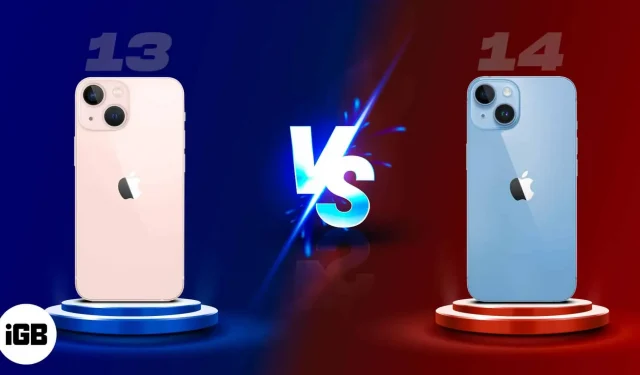
I’ve been following Apple for a long time and noticed two things. First, Apple doesn’t try to fix what isn’t broken; second, they let the technology mature and then incorporate it into their products or make revolutionary changes that set the trend. The standard iPhone 14 may seem like a disappointing upgrade over the iPhone 13, but it’s a bit more than meets the eye.
In the iPhone 14 series, we see the implementation of both of these approaches. So, you might have questions like: Is there a big difference between the iPhone 13 and iPhone 14? Or is it worth upgrading from iPhone 13 to iPhone 14? Read along to find the answers to these questions.
We’re not talking about the iPhone 14 Plus
Before we get started, let me turn to the elephant in the room, the iPhone 14 Plus. Apple revived the Plus naming scheme and introduced a larger standard iPhone (6.7 inches). Aside from the bigger screen and bigger battery, there are no differences between the iPhone 14 and 14 Plus. This article will only discuss upgrades between the standard 6.1-inch iPhone 13 and iPhone 14.
iPhone 14 vs. iPhone 13: design and display
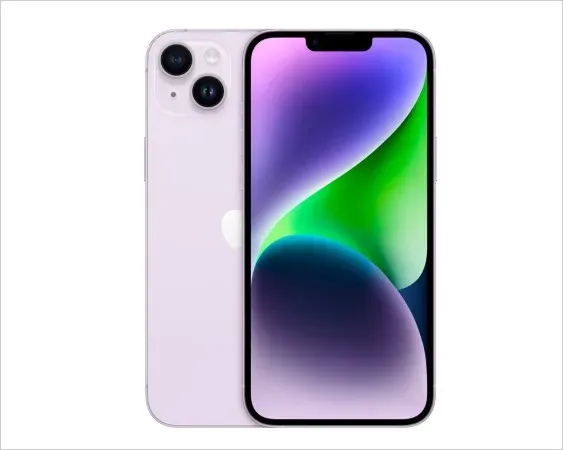
In terms of design and display, the iPhone 13 and iPhone 14 are identical with 800 nits peak brightness and 1200 nits peak HDR brightness. The notch featured on the iPhone X is present on the standard iPhone 14. It has been reduced in length and is wider on the iPhone 13, as is the case with the iPhone 14. The notch has been replaced with a Dynamic Island on the iPhone 14. Pro and iPhone 14 Pro Max.
The display and back glass of both iPhones have Ceramic Shield protection, while the frame is made from aerospace grade aluminum. Despite camera upgrades (more on that later), the layout remains the same; arranged diagonally. The iPhone 14 weighs 172 grams, which is 2 grams lighter than the iPhone 13 (174 grams).
Another change that happens every year with the iPhone is new colors. iPhone 14 is now available in Blue, Purple, Midnight, Starlight, and PRODUCT Red. These were all the physical changes in the iPhone 14.
iPhone 14 vs. iPhone 13: camera
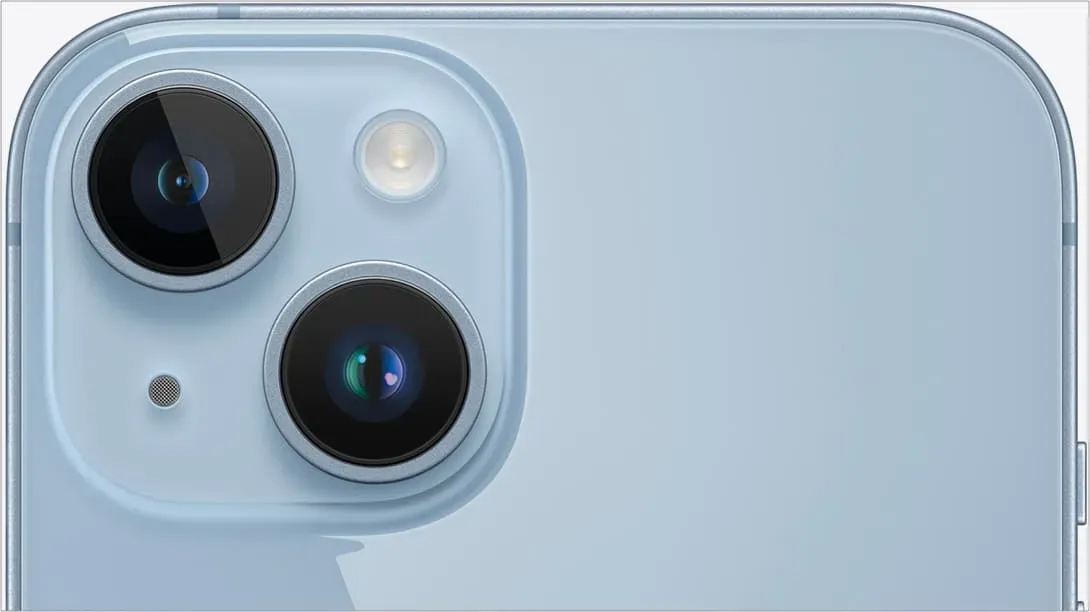
Every year a new iPhone is released, and Apple tries to highlight improvements in the camera system. So, does the iPhone 14 have better cameras than the iPhone 13? While the camera layout and setup are identical, there are a few changes.
While the iPhone 14 features a dual 12MP camera like its predecessor, the sensor has been upgraded. Let’s start with the main camera, which has been increased to f/1.5, which reduces motion blur and captures more detail. The sensor also has a smaller 1.9µm pixel size. Sensor offset capabilities are retained to improve OIS.
The front camera of iPhone 14 is equipped with an upgraded 12-megapixel sensor with f/1.9 aperture and autofocus capability. This results in faster focus times even in low light conditions. Another hardware change is the addition of the Photonic Engine, which helps preserve more information and detail in images by applying deep fusion to uncompressed images earlier.
The camera flash has been updated in the iPhone 14 lineup. Now it consists of 9 LEDs and is adaptive. The intensity and nature of the flash changes depending on the focal length set at the time of shooting – a perfect example of software and hardware working in sync.
The video capabilities of iPhones are undeniable. To further improve this, the iPhone 14 can now shoot cinematic video at up to 4K 30fps (HDR), while the iPhone 13 is capped at 1080 30fps. Action Mode is a newly introduced video mode with excellent video stabilization.
iPhone 14 vs iPhone 13: Performance
For the first time, a new iPhone comes with a previous-generation processor. The iPhone 14 uses the same A15 Bionic processor as the iPhone 13 series. However, the A15 SoC used in the iPhone 14 has a 5-core GPU and 6GB of RAM. Simply put, this is the same SoC as in the iPhone 13 Pro.
One extra GPU core and 2GB of extra RAM over the iPhone 13 don’t bring much improvement to the iPhone 14. Gaming is one area where we can expect some improvements along with better RAM management.
The A15 Bionic is a powerful and reasonably powerful processor that is way ahead of the competition. You won’t experience any lag or stuttering just because the iPhone 14 has a processor that was released a year ago.
Special features with iPhone 14 series
Until now, it might seem that there is nothing essentially new in the iPhone 14. While this is partly true and Apple seems to be focusing on the iPhone 14 Pro lineup this year, some brand new features are exclusive to the iPhone 14.
Emergency SOS via satellite
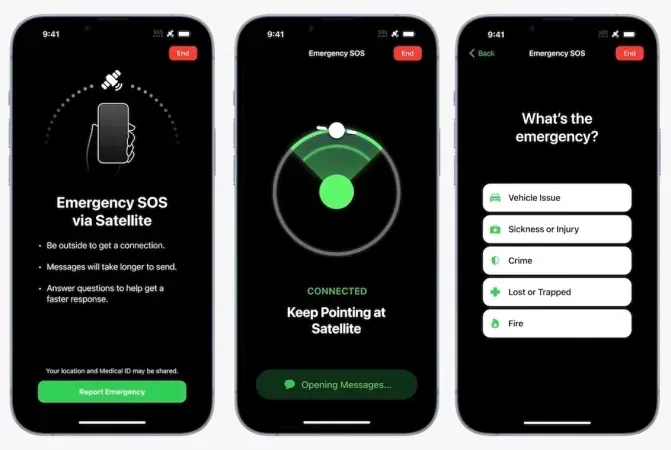
Satellite SOS Emergency Call is a feature exclusive to the iPhone 14 lineup. It allows you to send SOS messages by connecting your iPhone to a satellite orbiting in space. The original satellite phones have a huge antenna to communicate with the satellite.
Apple, however, has implemented the same antennas in the iPhone without increasing the bulk of the device. Indeed, an impressive feat. I hope that other smartphone manufacturers will take inspiration from Apple and implement satellite communications in their devices soon.
Fault detection thanks to new sensors
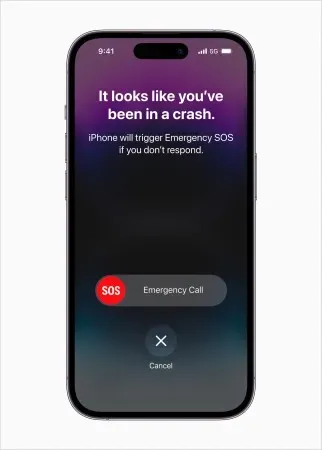
Sensors play an integral role in the functioning of the iPhone and provide various functions. One such feature enabled on iPhone 14 thanks to the new high dynamic range gyroscope and high acceleration accelerometer sensors is collision detection.
Suppose you are in a car accident; no matter which side of the collision happened, the iPhone will detect the accident and send an SOS message. After a failure is detected, if the user cannot respond within 10 seconds, a message is automatically sent to the emergency services. I sincerely hope you never find yourself in a situation where you have to use this feature, but it’s reassuring that if you do, technology can help you in one way or another.
Physical SIM is no longer supported
First, Apple removed the 3.5mm headphone jack from the iPhone, then the charging adapter from the box, and now Apple has removed physical SIM support from the iPhone 14. You can no longer insert a physical SIM card, as there is no SIM card in the devices. tray. The default option to enable cellular is eSIM.
The iPhone 14 line supports dual SIM and allows you to save up to 5 eSIM profiles. This currently only applies to devices sold in the US. Apple likes to remove hardware features that other smartphone brands deride at first but soon follow.
iPhone 14 vs iPhone 13: price
If you’re planning to upgrade from iPhone 13 to iPhone 14, don’t. You should take a look at the 14 Plus or 14 Pro line as most of the significant upgrades lie on that side of the spectrum. The iPhone 14 starts at $799 for the 128GB variant, while the iPhone 13 received a $100 price cut and now starts at $699.
I think iPhone 14 is for users upgrading from iPhone 11 or below. Right now, we have iPhones at every price point, which provides more competition and allows more users to switch from Android to iPhone. Let me know in the comments what you think of the iPhone 14 series and if you think it’s an upgrade from the 13 or Apple better call it the iPhone 13S.
Leave a Reply